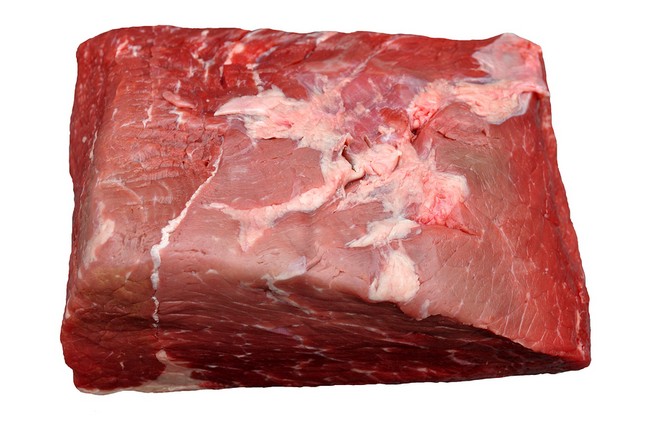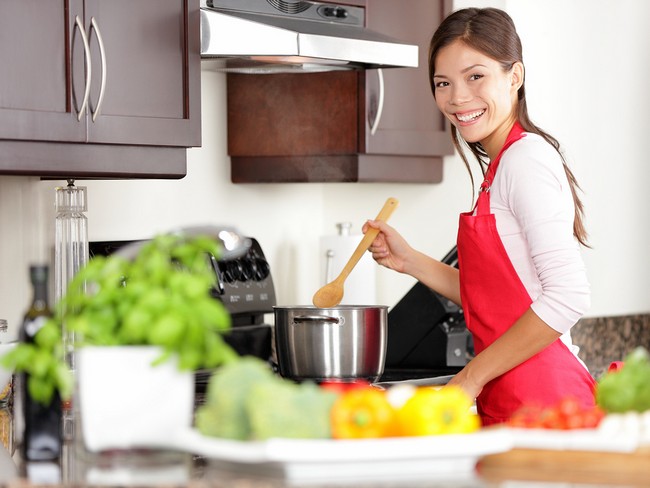- Make It Yourself Lavender Heart-Shaped Bath Bombs!
- 20 Things You Never Knew About “Down There”
- 12 Best Foods For Those Suffering From Arthritis Pain
- 12 Personal Hygiene Mistakes Almost Everyone Makes (Mom Never Told You About #4!)
- 15 Medicinal Plants And Herbs From The Cherokee People
- 12 Mind-Blowing Benefits Of Drinking Coconut Water During Pregnancy
- 12 Outstanding Winter Foods That Won’t Fatten You Up Like A Christmas Turkey
Are Cookbooks Dangerous To Use?

Photo credit: bigstock.com
So many people love to get a new cookbook that has pictures of all of the recipes. Seeing exactly how a recipe is supposed to end up helps novice cooks and experienced chefs just enjoy seeing what’s new. But there seems to be one thing missing from so many cookbooks. A professor at North Carolina State University who specializes in food safety believes that most cookbooks don’t tell people how to cook so they don’t have to worry about “the risk of contracting a foodborne illness.”
Safety seems to be on the back burner when it comes to putting together a new cookbook. A study of more than 1,500 recipes from some excellent cookbooks had only around 123 recipes that told cooks the temperature that the meat should be cooked at. Here are additional safety tips you should be aware of:
1. Internal temperature of meats
There was a definite discrepancy regarding the correct temperature at which to cook meat at. Around 28 percent of the cookbooks that were reviewed told readers to use temperatures that were not hot enough to destroy parasites or bacteria. Around 22 percent of the recipes did not tell the cooks to count on a meat thermometer to find the proper temperature for cooking.
2. Proper temperature for cooking chicken
When cooking chicken properly, the cookbooks were off by 5 degrees suggesting cooking the poultry to 160 degrees rather than 165 degrees. Some of the cookbook authors were counting on the temperature of the chicken to rise at least 5 degrees after it was taken off the heat, but that has not been proven to occur or to be safe.
Continue to Page 2

Photo credit: bigstock.com
3. The best temperature for cooking pork
The good news is that there were more accurate temperatures given to cook recipes involving pork. This food has always been one that has been known to cause people to become ill if it has not been cooked properly.
4. The proper temperature for ground beef
When it comes to cooking beef, there were more beef recipes in the reviewed cookbooks that did not even give a suggested internal temperature than any other food. It was suggested to go by the color of the meat in order to see if the food was cooked properly.
5. The correct temperature for completing a recipe
Most recipes only put the cooking time down when a recipe is supposed to be done cooking instead of using the temperature of the food to determine doneness. But there were too many things that played a part in how long something would take to cook. Some things that were not taken into consideration were the size of the dish that the food was being prepared in, the differences between the variety of equipment that the food was being cooked on, and the temperature of the food as it went into the oven. Cold food would take longer than anything that was room temperature.
6. How to cook turkey properly
While some recipes used the internal temperature of a food to determine when a recipe was done, some used a time frame. A turkey could be reported to be done cooking after 3 hours or not until it reached an internal temperature of 165 degrees.
Continue to Page 3

Photo credit: bigstock.com
7. Sanitary practices while cooking
Another area that was completely left untouched was any advice as how to deal with foods that could become cross contaminated. This would occur when the germs of a specific food become transferred to another food. The recommendation to use a separate cutting board for different utensils, or for some foods that are cooked along with other foods that are raw was only touched on by about 29 recipes. Surprisingly, only a total of 12 recipes instructed people to make sure that they washed their hands after they touched any kind of animal protein that was raw. This type of omission could create serious health risks.
8. Handling chicken without contamination
A major mistake that many people actually think is required is the practice of washing chicken or any kind of poultry that is raw. When you wash raw poultry it actually ends up spreading the germs around rather than flushing them away through the sink. There is an abundance of germs that would find their way around not only the sink, but to any other places in the kitchen.
While many of these cookbooks are written by popular and well-respected chefs such as Rachel Ray, Ina Garten, and Giada De Laurentis, they still are not exempt from providing material that could be viewed as unsafe for the home chef to follow.
When in doubt, make sure you take proven cleaning and hygiene techniques when dealing with foods and kitchen equipment. Anything you can do to prevent any kind of cross-contamination will save your guests from becoming ill unnecessarily.
READ ALSO: Don’t Have Time To Cook? Try These Easy 15-Minute Recipes Video
Also, always go by the internal temperature that is suggested for a protein. This will ensure that the food is properly cooked regardless of whether it went into the oven cold and was suggested to cook it for 45 minutes. It is the temperature that counts, not the time that the food is being cooked.
References:
































